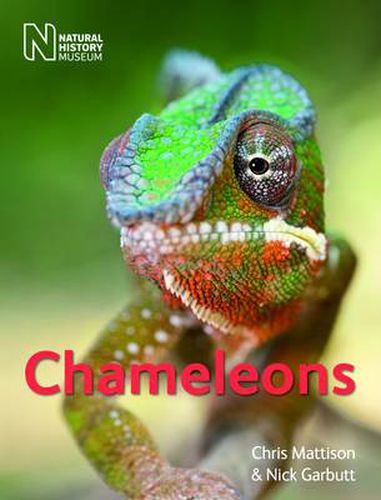Readings Newsletter
Become a Readings Member to make your shopping experience even easier.
Sign in or sign up for free!
You’re not far away from qualifying for FREE standard shipping within Australia
You’ve qualified for FREE standard shipping within Australia
The cart is loading…






With flattened bodies, opposed feet, independently swivelling eyes, a prehensile tail, and the ability to change colour, chameleons are both fascinating and charismatic. Chameleons is the first popular guide to this extraordinary animal group. This stunningly illustrated book begins by exploring chameleon evolution and classification, describing how they fit into life’s evolutionary tree and revealing their close relations. It discusses the variations in size, shape, colour and markings among the many different species and explains why chameleons look like they do. There are chapters on reproduction and development, food and feeding, and how chameleons defend themselves against predators. Chapter six examines the relationship between chameleons and humans, from their occurrence in mythology and superstition to worldwide conservation work and details of where to see chameleons in the wild. The final section provides an overview of the ten genera of chameleons, describing their distinguishing features, distribution and natural history. Drawing on their vast experience, the authors provide an illuminating insight into the lives of these unusual animals.
$9.00 standard shipping within Australia
FREE standard shipping within Australia for orders over $100.00
Express & International shipping calculated at checkout
With flattened bodies, opposed feet, independently swivelling eyes, a prehensile tail, and the ability to change colour, chameleons are both fascinating and charismatic. Chameleons is the first popular guide to this extraordinary animal group. This stunningly illustrated book begins by exploring chameleon evolution and classification, describing how they fit into life’s evolutionary tree and revealing their close relations. It discusses the variations in size, shape, colour and markings among the many different species and explains why chameleons look like they do. There are chapters on reproduction and development, food and feeding, and how chameleons defend themselves against predators. Chapter six examines the relationship between chameleons and humans, from their occurrence in mythology and superstition to worldwide conservation work and details of where to see chameleons in the wild. The final section provides an overview of the ten genera of chameleons, describing their distinguishing features, distribution and natural history. Drawing on their vast experience, the authors provide an illuminating insight into the lives of these unusual animals.